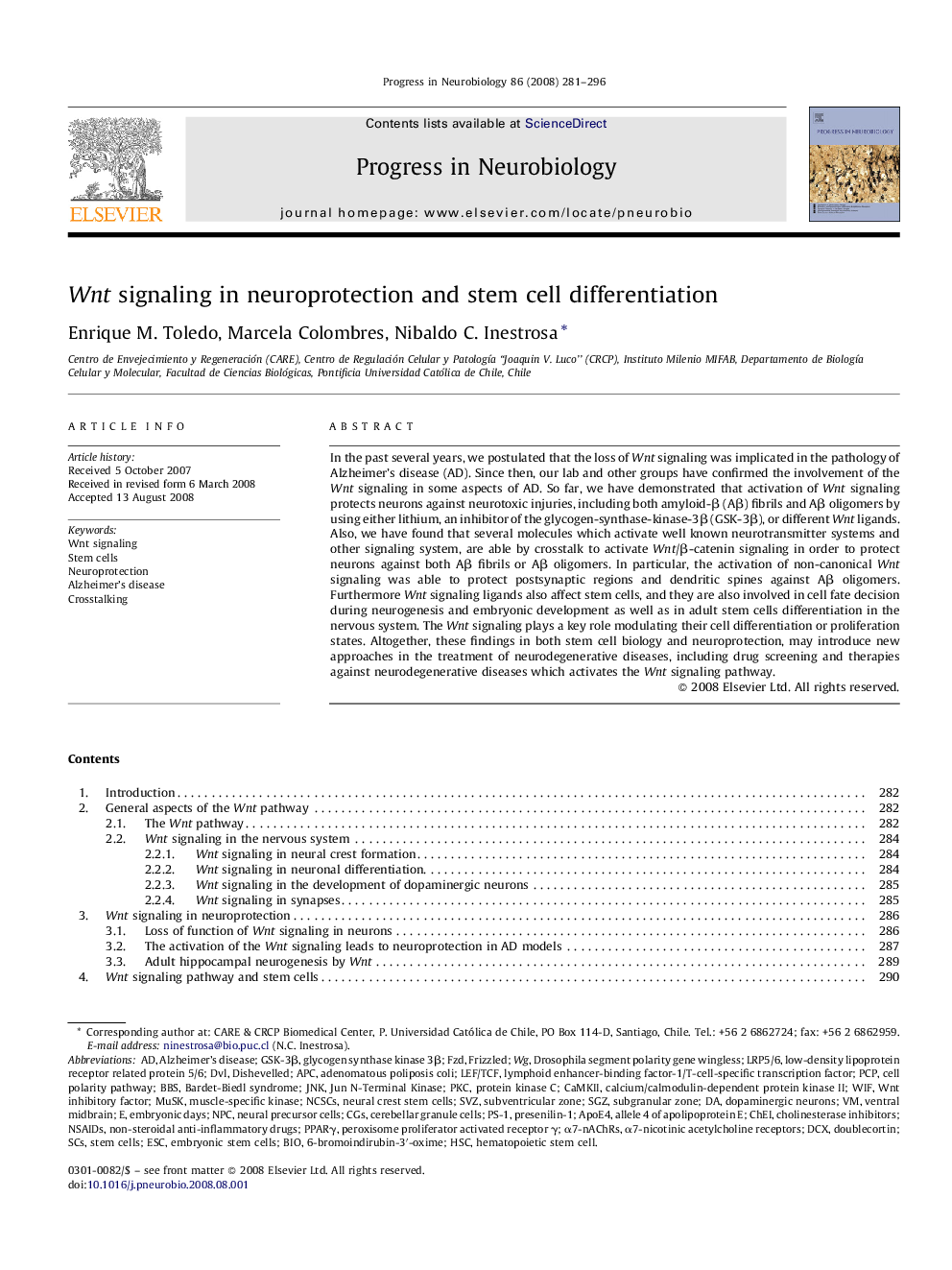| Article ID | Journal | Published Year | Pages | File Type |
|---|---|---|---|---|
| 4353869 | Progress in Neurobiology | 2008 | 16 Pages |
In the past several years, we postulated that the loss of Wnt signaling was implicated in the pathology of Alzheimer's disease (AD). Since then, our lab and other groups have confirmed the involvement of the Wnt signaling in some aspects of AD. So far, we have demonstrated that activation of Wnt signaling protects neurons against neurotoxic injuries, including both amyloid-β (Aβ) fibrils and Aβ oligomers by using either lithium, an inhibitor of the glycogen-synthase-kinase-3β (GSK-3β), or different Wnt ligands. Also, we have found that several molecules which activate well known neurotransmitter systems and other signaling system, are able by crosstalk to activate Wnt/β-catenin signaling in order to protect neurons against both Aβ fibrils or Aβ oligomers. In particular, the activation of non-canonical Wnt signaling was able to protect postsynaptic regions and dendritic spines against Aβ oligomers. Furthermore Wnt signaling ligands also affect stem cells, and they are also involved in cell fate decision during neurogenesis and embryonic development as well as in adult stem cells differentiation in the nervous system. The Wnt signaling plays a key role modulating their cell differentiation or proliferation states. Altogether, these findings in both stem cell biology and neuroprotection, may introduce new approaches in the treatment of neurodegenerative diseases, including drug screening and therapies against neurodegenerative diseases which activates the Wnt signaling pathway.
